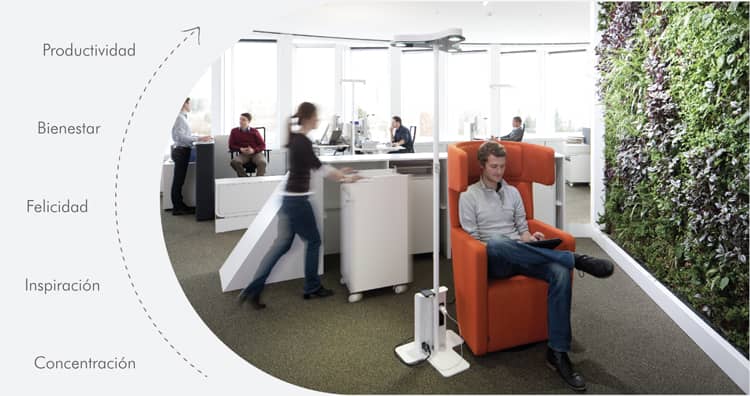BENEFITS OF LIVING WALLS
BENEFITS OF LANDSCAPING IN BUILDINGS
Green facades and green roofs bring great benefits to the environment, buildings and people. They allow the natural processes of plants to be harnessed to combat many problems in cities and interior spaces. Benefits include:

1. ENVIRONMENTAL BENEFITS
Plants fix many air pollutants and increase CO2-fixing surfaces, reduce the temperature in their environment and provide relative humidity through evapotranspiration (mitigating the heat island effect in cities); they cushion the effect of torrential rains, retain dust and promote biodiversity in urban centers.
Urban sprawl damages biodiversity, causing the extinction of species and affecting the biosphere. Landscaping contributes to enrich and conserve a great variety of insects, birds and other living beings in urban centers, preserving biodiversity.

2. BENEFITS FOR BUILDINGS
Plants provide oxygen, moisture and biofilter volatile organic pollutants (VOCs) such as benzene and formaldehyde, improving indoor air quality. Outdoors, they improve the acoustic and thermal insulation of facades, reducing energy consumption and prolonging the life of waterproofing, among many other benefits.

3. BENEFITS FOR INDIVIDUALS
Plants improve well-being, comfort, concentration and productivity in work environments. In addition, they allow us to connect with living elements, reinforcing our biophilic need, inspire us and make us happier. Studies confirm that in hospital areas, vegetation helps to reduce patient stays.

4. BENEFITS FOR COMPANIES/INSTITUTIONS
Landscaped facades are systems that allow companies that implement them to express, in a visual and forceful way, their concern and attention for the creation of more friendly, sustainable and healthy environments for their customers. This generates a positive impact on the recognition of their brand image. And this has a positive impact in the field of Corporate Social Responsibility (CSR).
